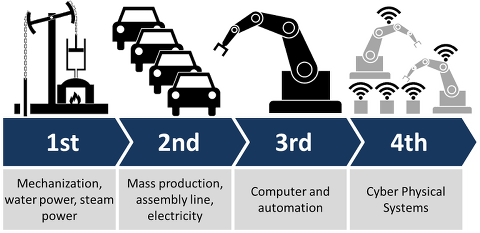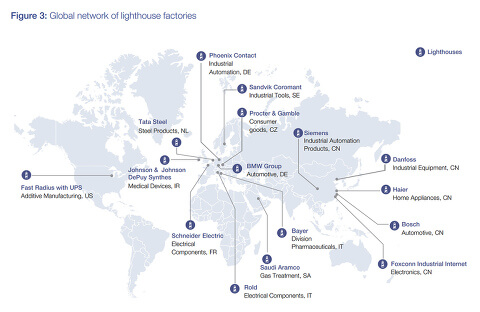How to communicate your ‘Fourth Industrial Revolution’ offer
(or how to be taken seriously in any overhyped industry)?
This month we have been talking to some clients and prospects about thought leadership positions on Fourth Industrial Revolution (4IR) technologies – generally taken to include AI, Industrial IoT and robotics.
There is a lot of noise and hyperbole here. So how do you say something useful on a topic where everyone and their dog are throwing content against the wall in the hope some of it sticks?

We had a look at some content we like (and content we don’t) and reached a few conclusions about what makes for good thought leadership.
1. Don’t jump on the hype bandwagon
AI is going to transform the way we do X. We are on the brink of an IoT revolution. 76% of executives consider robotics a strategic priority.
Who cares? We know 4IR tech will have an impact on business, but promising generic transformation gives us nothing of value. What decision makers are interested in is how it will impact them, and what they should be doing about it.
There is a fundamental knowledge gap in 4IR technologies between the hype and the practical reality of what to do about it. That is where people who want to own parts of the 4IR debate need to play.
IoT startup, Eseye, could have taken a general position on all things IoT and scrambled to be heard. Instead they took a specific position related to parts of the IoT deployment challenge that they address. Their whitepaper IoT Planning - Seven Key Questions for Highly Effective M2M deployments, looks specifically at IoT connectivity, guiding the reader through practical decisions.
2. Ask how well your customers understand the technology opportunity
A lot of ‘commentators’ fall into the trap of thinking 4IR needs to be presented as a cutting edge, disruptive technology. But don’t forget about the ‘I’ in 4IR or IoT.
These technologies are about collecting and using data from physical assets in industrial environments. Which means the main beneficiary will be companies that exist in the physical world, who were born in the pre-digital age. These are largely organisations struggling with digital transformation. They need to be guided cautiously through the process.
You may be a cool disruptive organisation, but chances are your customers are not. They need practical advice to get them started on the journey, not promises of revolution.

3. Address real challenges
No one is looking for a single answer to ‘digital transformation’. Even where that is an overarching goal, it will be broken down into lots of specific areas. In many cases tech adoption comes at a departmental level – with individual sponsors tackling specific pain points. And whilst business decision-makers may care about the long term, they are interested in actions they can take in the next 12 months.

Good insight should address real challenges that relate to these pain points, such as predicting mechanical faults, reducing power use, or optimising stock management. They should not try to promise everything to everyone.
Such challenges are best explained if they are backed by use cases and stories from the front line. Thought Leadership is not about coming up with flashy ways to explain things, it is about having the intelligence to capture insight from the experts in your organisation and articulating them in a clear and useful way.
Tessella’s article on data in rail is a challenge specific piece, talking through solving issues of predicting failure in rail, whilst drawing lessons that can be applied to a wider range of projects.
4. Big picture is great, but keep it actionable
That said, good strategic advice aimed at a more senior audience will always be welcome. But ‘high-level’ can easily drift into naval gazing.
Companies that offer good big picture insight still make it specific and actionable. Strategic technology insight needs to look at organisational challenges. It needs to consider how the types of organisations you are targeting function (and note that industrial companies function very differently to modern digital companies). It should guide the reader to understanding how to spot challenges and opportunities in their organisation and help them target investments that will yield results.

A strong example is Fourth Industrial Revolution Beacons of Technology and Innovation in Manufacturing by McKinsey and the World Economic Forum. It analyses real examples of companies doing 4IR well, and describes the characteristics that make them successful, offering actionable advice which a manufacturer could immediately put to use.
5. Don’t push 4IR as a ‘technology’, it is part of a solution
Buying 4IR tech is not like buying a smart fridge. You don’t just connect the app and you’re away. 4IR solutions need to be integrated into complex business and operational processes and exiting IT and OT (Operational Technology) infrastructure.
Good thought leadership should highlight not just what the technology can achieve, but how it can be deployed. This means addressing issues such as: How can a technological solution be integrated into existing systems? How will it interact with other new 4IR technologies? How will working practices need to change to benefit from the new approach? What risks will it introduce and how can they be mitigated?
QinetiQ’s piece on Deployable 4IR – and indeed its broader Insights programme – looks at 4IR technologies in high-security and mission critical environments, considering the broad range of technologies, but discussing the practical challenges of deploying them.
Conclusion
Wherever you are trying to play on the 4IR buying decision process, the usual rules of good communication apply: make it targeted, relevant and actionable.
If you solve specific challenges, stick to that – it’s where insight is most needed. If you can help organisations deliver strategic technology programmes, explain how, don’t just tell them you can then list meaningless stats to scare them into doing something. Good thought leaders take a position because they have something useful to say, not because they spot a bandwagon to jump on.
Any new technology risks becoming a victim of its own hype, and plenty of companies are just making things more confusing for their customers. Turn your knowledge and experience into something people can use and you will get more quality leads, and be better trusted by your customers.
For more insights like this, sign up to our newsletter.









